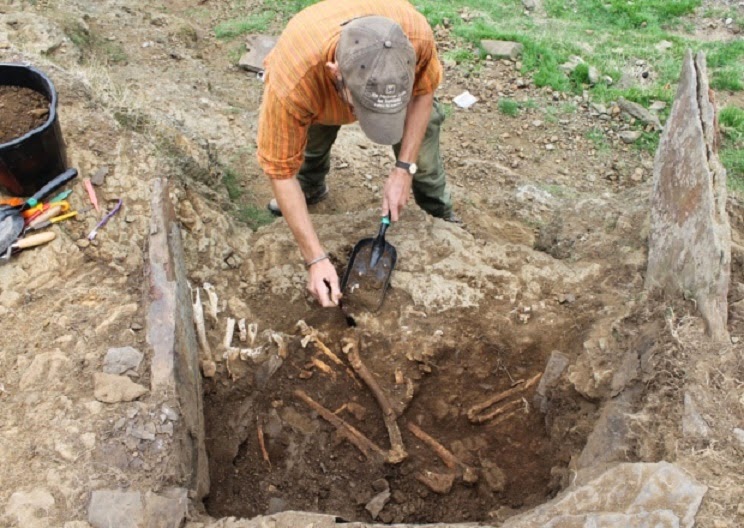Archaeologists have uncovered a 2000-year-old tomb believed to contain a wealthy father and son who were artisan weavers by trade and walked with the same “pigeon-toed” feet.

[Credit: Edinburgh News]
The men were laid to rest in an Iron Age stone cist close to the National Trust for Scotland’s (NTS) House of the Binns near Linlithgow.
One skeleton belonged to a man aged around 40 when he died between 92BC-65AD, while his relative was around 20 when he died some time later, 44BC-79AD, and his body was pushed in alongside him.
Skeletal analysis shows both men stood around 5ft 5in tall and suffered from worn teeth associated with weaving.
They also shared an unusual anomaly of the muscle attachment in the upper leg, which would have caused their legs to rotate inwards and made them walk with their toes turned in – pigeon-toed.
The older man was buried clutching an oval-shaped iron brooch to his left shoulder. Experts say it showed “incredibly rare” evidence of thread from his cloak.
NTS archaeologist Daniel Rhodes said the discovery was “exciting in its rarity”.
He said: “The first skeleton was an adult male, aged around 40 years, with wear on his teeth which suggests he may have been a weaver.
“The younger man was around 20 years old. They were intentionally buried in the same place and when you look at the date range they could be father and son.
“The younger man also suffered from worn teeth, and they both shared the same family leg deformity. There is no sign of disease so it probably didn’t cause severe damage or disability in life, but they may have been pigeon-toed.”
The House of the Binns is a 17th-century laird’s house overlooking the Forth, and home to the Dalyell family for 400 years.
The house was built in 1612 by Thomas Dalyell, an Edinburgh merchant who made his fortune at the court of King James VI and I in London. The Dalyell family gifted the house and surrounding parkland to the NTS in 1944, retaining the right of the family to live there.
The wider property contains archaeological remains pre-dating the establishment of the house and surrounding parkland. Iron Age burials are rare in Scotland, and ones with grave goods even rarer. Just 50 accompanied burials are known.
Mr Rhodes added: “There has always been folklore about Binns Hill being the site of a hill fort. The fact that there is this kind of status burial found at the foot of the hill, there must have been other activity going on in this period. It’s an absolutely perfect spot.”
Author: George Mair | Source: Edinburgh News [March 29, 2015]